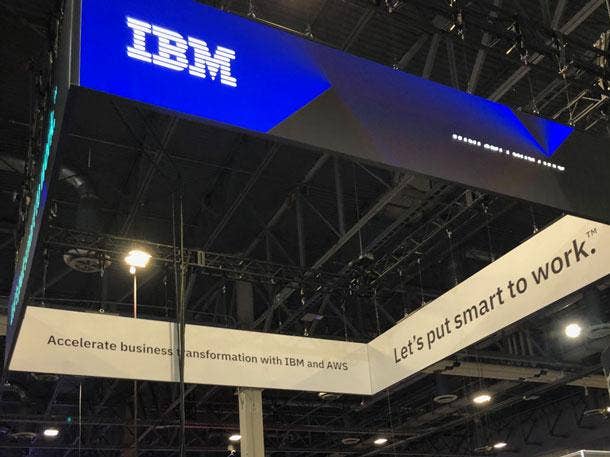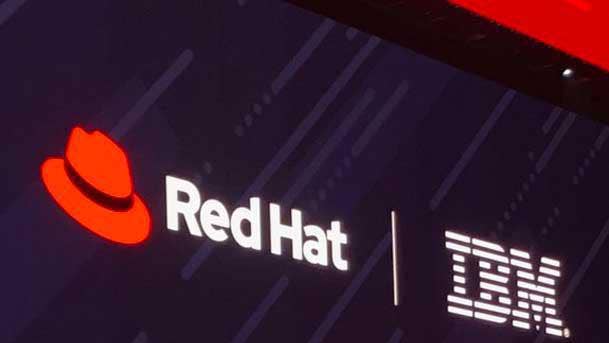5 Big Things To Know About IBM’s Spin-Off: A ‘Landmark Day’
The main reason for the breakup is to field two independent entities squarely focused on two unique and massive market opportunities. That’s an approach IBM expects to put both companies on a faster growth trajectory.

On what IBM CEO Arvind Krishna described as “a landmark day for our company,” Big Blue revealed plans for the largest spin-off in its history—one that will create a new channel giant.
“We are redefining the future of IBM and where we will put our focus moving forward,” Krishna told investors Thursday morning during a strategic update call in which he was joined by his CFO, Jim Kavanaugh.
IBM will spin off the bulk of IBM Global Technology Services into a new, publicly traded, investment-grade company currently dubbed NewCo, Krishna said, promising “we will get a name eventually.”
By the time the deal closes by the end of next year, NewCo will be the world’s largest managed infrastructure services provider, born with $19 billion in revenue and a $60 billion backlog.
NewCo is “already a market leader in scale and capability,” Krishna said.
And IBM will be a transformed company, for the first time in its recent history more focused on innovation than on consulting.
Here’s what you need to know about NewCo and the new Big Blue.

New Blue
After the spin-off, IBM will be a very different company.
Big Blue will have shifted its business model from one deriving more than half of revenue from services through the Global Technology Services and Global Business Services divisions to software and solutions comprising the bulk of sales.
In short, IBM will become an innovation-based business, Krishna told investors, rather than a services-driven one.
IBM’s remaining segments will be cloud and cognitive software, Global Business Services, systems and global financing. But separated from the largest component of its consulting practice, Big Blue will almost entirely depend on hybrid cloud and artificial intelligence to power its growth in the years to come.
“We will be maniacally focused on being the best hybrid cloud platform and AI company,” Krishna said.
Financial gains from the spin-off will enable more aggressive investments, both organic and inorganic, in hybrid cloud, data and AI, security and emerging technologies like quantum computing, he said.

What’s In NewCo?
The new managed infrastructure services powerhouse to be named later on will essentially be a spin-off of IBM’s $27.4 billion Global Technology Services business, minus some key facets core to IBM’s hybrid cloud platform strategy.
“It’s infrastructure services without the IBM public cloud,” Kavanaugh told investors.
IBM will also hold onto its practices supporting the Power and Z hardware platforms, the CFO said.
The NewCo pieces last year posted $19 billion in revenue, which means the new consultancy will be born as the world’s largest managed infrastructure services provider—twice as large as its next competitor, according to Krishna’s accounting.
NewCo, focused on infrastructure management and modernization, gets off the ground with a $60 billion backlog and 4,600 customers that include more than three-quarters of the Fortune 100.

Why Split?
The main reason for the breakup is to field two independent entities squarely focused on two unique and massive market opportunities. That’s an approach IBM expects to put both companies on a faster growth trajectory.
IBM looks to be primarily a developer of cutting-edge technologies that deliver enterprise digital transformations.
NewCo “will be laser-focused on client-owned infrastructure,” Krishna said, providing everything from traditional hosting and networking services to transformational ones like modernization of mission-critical infrastructure and hybrid and multi-cloud management for the world’s largest enterprises.
While IBM is divesting from infrastructure consulting beyond its own technologies, the company will remain “all in on application modernization,” Krishna said.
Global Business Services, a $16.63 billion division last year, will deliver those cutting-edge application services, be they modernizing applications, building new cloud-native ones or managing applications in a hybrid environment.
In recent years, Global Business Services and Global Technology Services have become largely untethered, Krishna explained, another motivation for the separation.
The trend IBM has seen in its customers is one of diverging purchasing cycles for infrastructure and applications, with the selection criteria and decision-makers most-often not one in the same.

The IBM-NewCo Partnership
IBM and NewCo will be entirely separate, with their own operating and financial models, but they’ll “continue to share a strong bond through strategic partnerships,” Krishna said.
“At first glance, it looks like we will be either each other’s largest customers or very close to that,” Krishna said.
But the separation will also result in “greater freedom to partner with other providers,” he told investors.
The guiding principle is to make the IBM-NewCo partnership one that’s beneficial to both companies rather than forcing customers into specific technology constructs and contracts.
At the same time, IBM will continue building out its ecosystem of business partners, including other leading systems integrators that will compete with NewCo.
The combination of ISVs and systems integrators “provide the fuel to the platform” that will be central to IBM’s business going forward.

Big Blue’s Red Stack
The leaner, newly restructured IBM will squarely aim at the market’s massive hybrid cloud opportunity by leveraging its Red Hat subsidiary, purchased two years ago for $34 billion.
“Hybrid cloud is a trillion-dollar addressable market for IBM,” Krishna said.
Red Hat enables IBM to win the “architectural battle” for cloud-native environments.
The IBM stack has a foundation of Linux and Kubernetes.
The products delivering those open-source technologies are Red Hat Enterprise Linux and OpenShift, Red Hat’s container platform that supports all client IT infrastructure, from on-premises to public cloud to private cloud to Z and Power Systems.
Moving up the stack, IBM’s middleware portfolio is now integrated and delivered by OpenShift through a family of Cloud Paks.
IBM now has 2,400 hybrid cloud platform customers and is seeing rapid growth, Krishna said, with a doubling of large Red Hat deals last year.